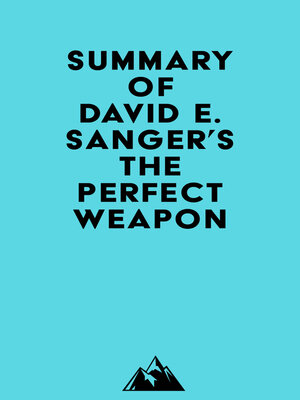
Sign up to save your library
With an OverDrive account, you can save your favorite libraries for at-a-glance information about availability. Find out more about OverDrive accounts.
Find this title in Libby, the library reading app by OverDrive.



Search for a digital library with this title
Title found at these libraries:
| Loading... |
Please note: This is a companion version & not the original book. Sample Book Insights: #1 In 2012, I met with Michael Morell, the deputy director of the CIA, to discuss a sensitive story the Times was preparing to publish. I knew that the meeting would be difficult, as the US government was not yet ready to discuss the consequences of its decision to use cyberweapons against another state in peacetime. #2 I had come to hear about which details of the Olympic Games story concerned Morell and his colleagues, and they were preparing to ask the Times to withhold them, lest we tip off other targets of ongoing operations. #3 The Obama administration was extremely secretive about its use of cyberweapons, and it was unclear how the public should feel about them. But there was no backtracking. When Michael Hayden, who had been central to the early days of America's experimentation with cyberweapons, said that the Stuxnet code had the whiff of August 1945 about it, he was making clear that a new era had dawned. #4 Hayden's insight into the game-changing nature of cyber conflict began in 1998, when he was assigned to San Antonio, Texas, as the commander of the Air Intelligence Agency. He remembered watching in wonder as members of the staff disabled remote workstations and used electronic-warfare techniques to fool a radarscope.






